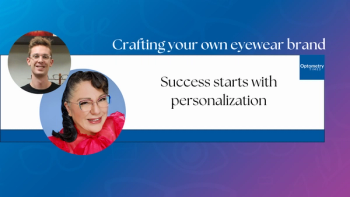
Dr. Casella's #1 tip for managing dry eye
Optometry Times'® Chief Optometric Editor Ben Casella, OD, FAAO, gives his number 1 tip for managing DED.
Optometry Times®' Chief Optometric Editor Ben Casella, OD, FAAO, shares his top tip for managing
Key takeaways:
- Dry eye disease is a disease
- Patient history never ends
- Stain more ocular surfaces
- Express meibomian glands
This transcript has been lightly edited for clarity.
What is my number one tip for dry management for the eye doctor? I would say it's going to be the consummation of several tips, briefly.
I would say that dry eye disease is a disease. This is not just some ocular surface, artificial tear thing. Tears certainly have their place, but this is a disease. It has an ICD code, just like diabetes, just like glaucoma, just like cataracts. And we are poised to take on dry eye; optometry is poised for this.
Patient history never ends. If you're having a difficult refraction and a patient seeing, and then they blink and whoa, I can't see a darn thing, we need to pull the proctor back, we need to look at the ocular surface.
We need to stain more ocular surfaces than we do. We need to stain patients who may not be having any symptoms at all, or maybe having symptoms that they're not telling us about. The ocular surface will speak to you, we just have to look at it.
And maybe the most important tangible tip that I could give would be to express meibomian glands. And not just the ones on the lower lid, we need to express and see what's coming out of those glands. Is it a nice clear oil or is it toothpaste? And that's going to really drive our management, that's going to really tailor our therapy accordingly. Don't forget to express glands.
Newsletter
Want more insights like this? Subscribe to Optometry Times and get clinical pearls and practice tips delivered straight to your inbox.
















































.png)


